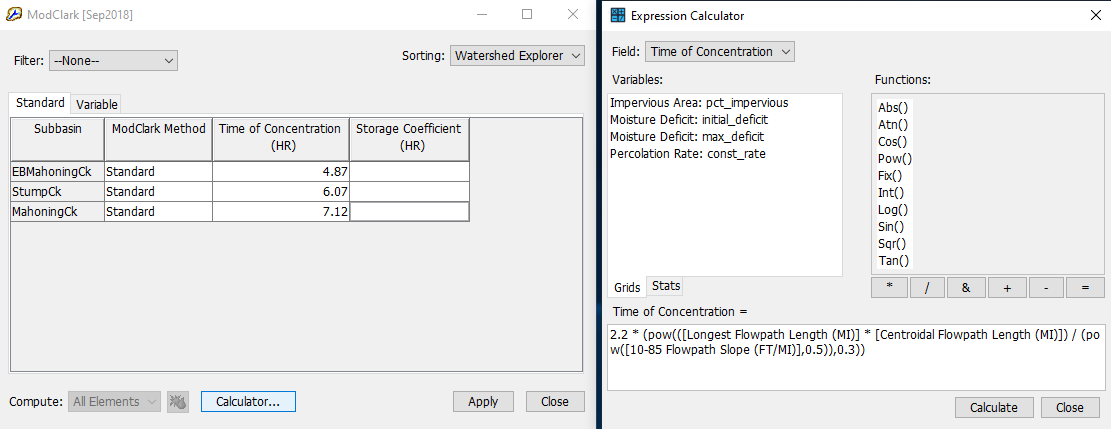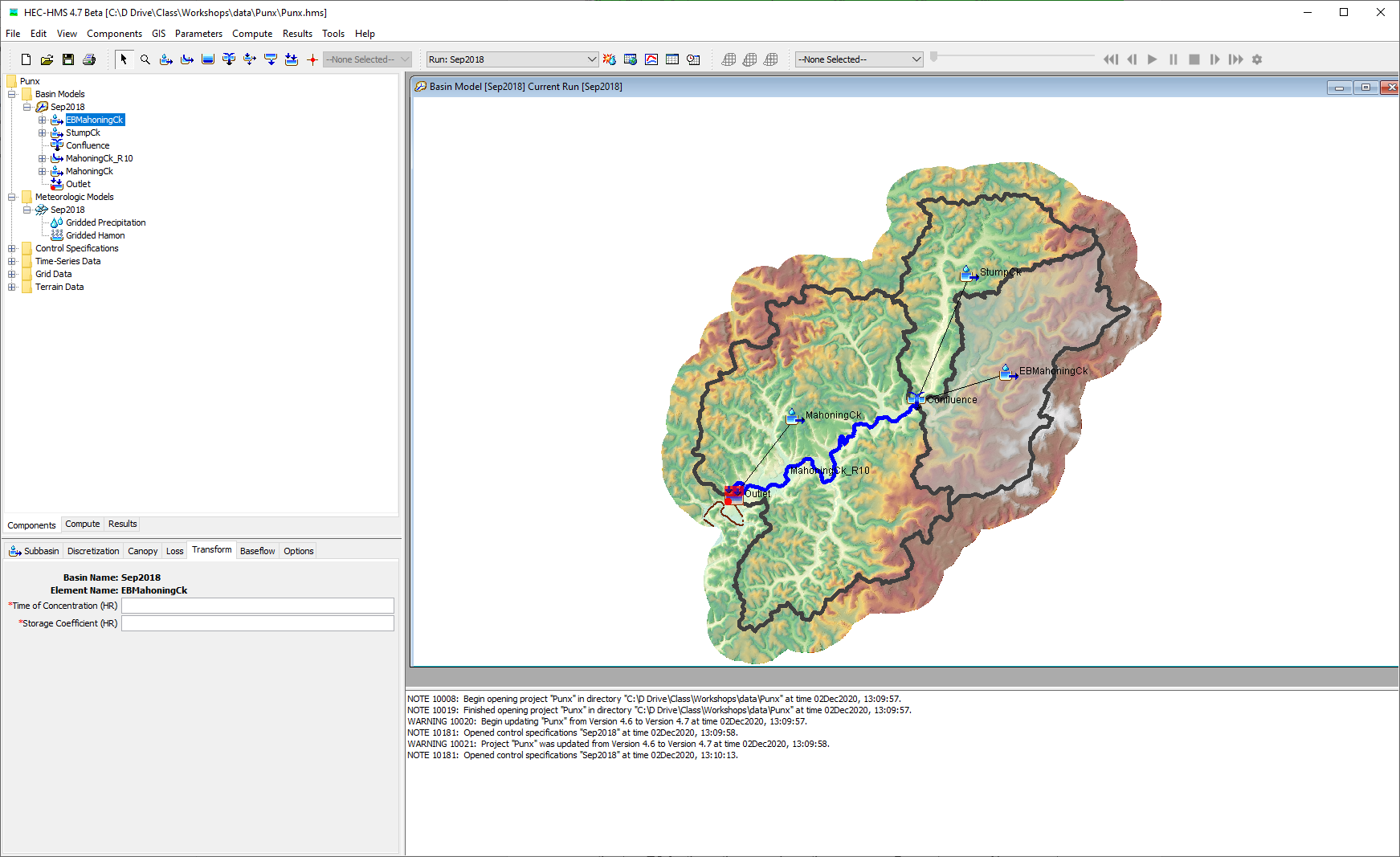Establishing initial parameter estimates (i.e. canopy, loss, transform, baseflow, and routing parameters) for large hydrologic models can be an arduous task. There are several useful tools in HEC-HMS that can simplify the process. HEC-HMS has the capability to calculate various subbasin and reach characteristics based on the terrain dataset associated with the Basin Model. These characteristics are useful for quantifying physical traits of subbasins and reaches; they can serve to identify homogenous characteristics/groupings of subbasins in a model, as well as to point out their differences. Subbasin and reach characteristics, along with common raster datasets, can be accessed via the Expression Calculator in HEC-HMS. Regression equations based on GIS traits such as river lengths, river slopes, land use classification, soil types, etc. can be entered into the Expression Calculator to estimate initial parameters. These initial estimates are automatically populated into the global editors.
In this workshop, you will use HEC-HMS to compute subbasin and reach characteristics and you will use the built-in Expression Calculator for parameter estimation. This workshop includes two components: 1) Computing Subbasin and Reach Characteristics and 2) Estimating Parameters with GIS Datasets.
The figure below shows the parameter Expression Calculator and an example expression used to estimate the Clark Time of Concentration parameter.

In this workshop, you will:
- Learn how to compute subbasin and reach characteristics in HEC-HMS.
- Learn how to use the Expression Calculator in HEC-HMS to estimate transform and loss parameters.
You will be using the Punxsutawney Watershed HEC-HMS model for this workshop. All model and parameter components other than transform and loss parameters have been configured for you.

Continue to Computing Subbasin and Reach Characteristics